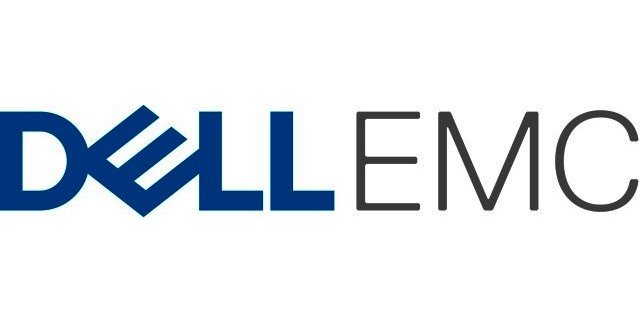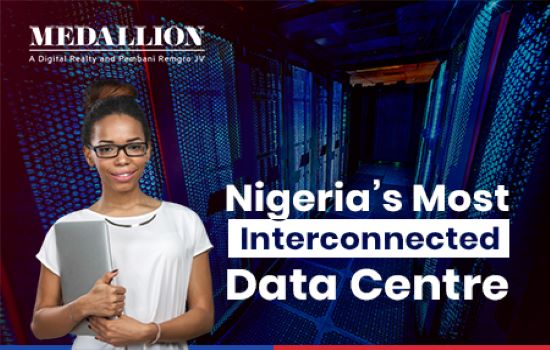E-Business
Dell EMC Expands Data Protection Capabilities

Dell EMC has unveiled new and enhanced capabilities to the Dell EMC Data Domain and Integrated Data Protection Appliance (IDPA) portfolio of backup storage appliances designed to offer organisations real-world flexibility and value with expanded multi-cloud capabilities and improved performance.
The enhancements also provide mid-sized organisations and remote offices of larger organisations with more choice and options in obtaining enterprise-level data protection.
According to IDC, 92 percent of organisations have adopted a cloud environment with 64 percent adopting a multi-cloud approach.3 With a mix of different clouds, protecting data across workloads while meeting compliance and security requirements is a critical challenge for many organisations.
In fact, according to a study conducted by IDC for Dell EMC, cross-cloud support was the highest recognised data protection deficiency for IT transformation.4 Dell EMC recognises this challenge and continues to enhance its data protection appliances to help customers mitigate risk and protect their most valuable asset – their data – in multi-cloud environments.
Multi-cloud capabilities
Data Domain OS 6.2 and IDPA 2.3 software now provide customers with even more choice to extend their data protection to public clouds with expanded Cloud Tier support to Google Cloud Platform and Alibaba Cloud, thereby, enabling more flexibility for long-term retention.
This is in addition to support already offered across AWS, Microsoft Azure, Dell EMC Elastic Cloud Storage, Virtustream, Ceph, IBM Cloud Open Storage, AWS Infrequent Access, Azure Cool Blob storage and Azure Government Cloud. Also, a new Free-space Estimator Tool for Cloud Tier helps enable more efficient capacity management to help reduce on-premises and cloud storage costs.
Dell EMC also expanded its ecosystem of supported public cloud providers for Data Domain Virtual Edition (DD VE), which provides software defined data protection on-premises and in public clouds, to AWS GovCloud, Azure Government Cloud and Google Cloud Platform. This adds to the already supported platforms AWS S3 and Azure Hot Blob.
The expanded cloud ecosystem combined with the previously announced increased capacity for DD VE – up to 96TB per instance – ensures customers will receive the same level of protection within their growing cloud environments as they receive from their on-premises Dell EMC appliances.
Additionally, Native Cloud Disaster Recovery is now available across the entire IDPA family, enabling customers to cost-effectively failover to a cloud environment with end-to-end orchestration. Customers no longer have to bear the expense and management of setting up and maintaining a secondary site for disaster recovery and can failover to public clouds with ease in case of a disaster event and failback when the issues are resolved.
With this expansion, all Data Domain and IDPA models support AWS, including VMware Cloud on AWS, and Microsoft Azure for Cloud Disaster Recovery.
Organisations will also find peace of mind in that all Dell EMC data protection appliances provide modern, simple-to-manage user interfaces. Also, administrators can easily manage multiple Data Domain and DD VE appliances – on-premises or in public clouds – from a single user interface with the Data Domain Management Center.
Enhanced performance
Updates to the IDPA family now provide more performance for Instant Access and Restore with an enhanced data cache that results in up to four times more inputs/outputs per second (IOPS), providing up to 40,000 IOPS with as little as 20 milliseconds latency.5
Also, Data Domain appliances provide faster restores from an on-premises appliance and faster recalls from public clouds. Given these enhancements, organisations can now restore their data up to two-and-a-half times faster from a Data Domain appliance1 and recall their data up to four times faster from the cloud2 to a Data Domain appliance, allowing them to meet more stringent SLAs.
More options for mid-sized organisations
Choice and scalability are critical for smaller, mid-sized organisations that require enterprise-level, cloud-enabled data protection. In addition to cloud and performance updates, Data Domain DD3300 – a 2U appliance specifically designed for mid-sized organisations and larger enterprises with remote offices – has new hardware enhancements. DD3300 now offers an additional 8TB capacity model that can scale and grow-in-place to 32TB. Also, DD3300 now comes with faster networking capabilities with support for 10GbE and expanded backup options for virtual tape libraries (VTL) over Fiber Channel. These options provide mid-sized organisations with a cloud-enabled data protection solution that can grow as their needs change.
Supporting Quotes:
“As the industry leader in data protection appliances6, Dell EMC is committed to delivering continued innovation in our data protection portfolio that supports and improves customers’ adoption of multi-cloud environments,” said Beth Phalen, president, Data Protection, Dell EMC. “Our appliances are powerful, simple to manage and make it easy to expand to public clouds with native cloud capabilities.”
“Our long-standing relationship with Dell EMC has resulted in numerous successes for our business. We’re experiencing cost savings, greater efficiency and faster backup and recovery times with Dell EMC Data Domain and IDPA,” said John McFall Senior Vice President, Enterprise Technology Group, Security Service Federal Credit Union. “These results combined with the fact that our data is safe and secure allows me to sleep well at night.”
“Data protection efforts are a foundational part of the digital transformation efforts many organisations will embark on by 2020,” said Phil Goodwin, Research Director, IDC. “Purpose-built backup appliances, like Dell EMC Data Domain and Integrated Data Protection Appliance, have become a cornerstone of data availability improvement efforts.
They provide faster, more reliable backup with fewer job failures than other data protection options and, more importantly, support faster data restoration in the event of a loss which directly impacts an organisation’s bottom line.”
E-Business
Equinix Launches LG2.3 Data Centre in Nigeria

Equinix, global digital infrastructure company, has launched a cutting-edge LG2.3 data centre in Lagos aimed at fueling Nigeria’s booming tech scene.

Equinix officials at the launch
The data centre is designed to provide businesses with secure, reliable, and high-performance colocation and interconnection services, crucial for supporting the increasing demand for digital services across the region.
Nestled in the bustling Lekki Free Zone, LG2.3 is packed with the latest tech, offering businesses the secure and lightning-fast connections they crave. Think of it as the engine room for Nigeria’s online world, designed to handle the explosive growth of digital services.
The launch featured Bruce Owen, president, Equinix’s EMEA, who cut the ribbon to open the data centre.
“Nigeria is our focus,” Owen declared, emphasizing Equinix’s dedication to powering the nation’s digital growth. “The energy here is incredible, and we’re excited to be part of it.”
On his part, Wole Abu, managing director, Equinix’s West Africa, echoed this sentiment highlighting the increasing global demand for digital infrastructure.
“Africa is on the cusp of a digital explosion, and we’re here to support that growth,” he said.
Nigeria’s digital adoption is skyrocketing, driven by a young, tech-savvy population. Businesses are racing to embrace online platforms, and LG2.3 is perfectly positioned to meet their needs.
This investment is set to create a ripple effect, boosting the economy, creating jobs, and fostering innovation.
LG2.3 is set to be a beacon for Africa’s tech potential.
Equinix’s confidence in the continent aims to attract more global players, turning Africa into a digital powerhouse.
This data centre will act as a vital connection hub, empowering businesses to connect and collaborate, bridging the digital divide.
Equinix’s vision extends beyond Nigeria, with plans to expand across Africa.
strategic move reflects their commitment to building a connected and thriving digital ecosystem.
The success of LG2.3 is a testament to the power of public-private partnerships, with the Nigerian government playing a crucial role in attracting investment.
As Nigeria marches towards a digital future, Equinix’s LG2.3 data centre will be a key driver of progress. It’s a powerful symbol of Nigeria’s digital ambition and a catalyst for Africa’s tech revolution.
E-Business
Microsoft Marks 50th Anniversary with Major Copilot AI Update

Microsoft is celebrating its 50th anniversary with a major leap forward into artificial intelligence, unveiling significant updates to its AI assistant, Copilot.

The announcement was made on April 4, 2025, at the company’s headquarters in Redmond, Washington, marking a milestone for both Microsoft and the AI industry.
As the tech giant celebrates its golden anniversary, the company is setting its sights firmly on the future, particularly with its AI-driven tools.
Microsoft’s Copilot, which has been integrated into various software tools across its ecosystem, has now received a significant upgrade.
The new features aim to make the Copilot assistant more intelligent, personalised, and proactive, which positions Microsoft as a serious competitor in the AI space against other industry leaders such as OpenAI’s ChatGPT and Anthropic’s Claude.
Mustafa Suleyman, head of Microsoft’s AI division, expressed the company’s ambition, saying, “We envision Copilot not just as an assistant, but as a long-term AI companion, one that can learn, adapt, and evolve alongside its users. This goes beyond just responding to commands; it’s about fostering relationships between users and their AI.”
The most notable update to Copilot is its new memory functionality. Now, the assistant can retain information such as preferences, previously used commands, and even personal context, making it more responsive and efficient in future interactions.
This means Copilot can, for example, anticipate a user’s needs based on past behaviours, from scheduling meetings to suggesting restaurants for a night out.
In addition to the memory features, Copilot’s new “Vision” capabilities extend the AI’s functionality across multiple platforms. Windows and mobile users will now be able to interact with Copilot using both the camera and on-screen elements.
This includes actions such as booking appointments, managing tasks, and even shopping online — all in a more interactive and seamless way.
Scott Guthrie, Microsoft’s Executive Vice President, shared his enthusiasm about the potential of these advancements, stating, “With these new capabilities, we’re not just reacting to AI’s capabilities — we’re shaping the future of how users interact with technology. AI can do so much more than just assist with tasks. It can enrich the human experience.”
The updated Copilot is designed to challenge industry competitors like ChatGPT and Claude, offering more personalised and context-aware interactions.
Microsoft has positioned its Copilot as a tool that not only assists users but builds a deeper, more intuitive relationship over time.
The company has also placed a strong emphasis on AI accessibility. With AI’s growing role in everyday tasks, Microsoft aims to make it easier for users to adopt and benefit from these technologies, regardless of their technological proficiency.
Despite past challenges, including legal disputes over privacy and AI ethics, Microsoft continues to push boundaries in the AI space. Guthrie remarked, “This is just the beginning. As we continue to innovate, we are reshaping how people work, interact, and live with technology.”
With Copilot’s advancements, the tech giant hopes to continue its legacy of innovation, making AI tools accessible and useful for people around the world.
E-Business
Report Suggests a Slash in Mobile App Usage By 2027 Due to AI Assistants

By 2027 mobile app usage will decrease by 25 per cent due to AI assistants according to Gartner, Inc. Smartphone users will turn to AI assistants, such as Apple Intelligence, ChatGPT, Google Gemini, Meta AI, and others to replace apps for many functions.

In addition to the impact of AI assistants, apps will be consolidated across separate brands and companies, creating mobile app partnerships or consortiums to reach more users per app at scale and defray the cost of creation and maintenance.
“CMOs should begin scenario planning for the impacts of decreased mobile app usage,” said Emily Weiss, Senior Principal for the Gartner Marketing Practice.
“Brands with low app engagement and retention will likely be first impacted – this will be a positive development for brands that are not overly reliant on driving revenue via apps as app development costs will decrease.
Other brands may be severely impacted by the disintermediation of users turning to AI assistants for services. The loss of app users will also result in the loss of first-party data collection and the ability to reach fewer users via mobile push notifications,” Emily added.
By 2026, Over 1/3 of Web Content will be Created for the Purposes of Gen-AI Powered Search According to Gartner’s 2024 CMO Spend Survey of 395 respondents between February and March 2024, the average CMO allocated almost a quarter of their digital marketing budget to search.
Other than end users directly visiting a website, search currently drives more traffic to the average commercial enterprise website than any other referral source.
Given this, a loss of search driven traffic due to algorithmic shifts by major search engines would result in tangible, negative commercial impact to any organisation.
“CMOs will need to direct their teams to hire talent with a strong understanding of how GenAI, and broader AI influences, impacts the performance of their content in search algorithms,” said Weiss.
“It will be important to upskill the function by investing in search and content talent with AI skillsets. These associates will need to have familiarity with creating or optimising content to train and rank within evolving search algorithms,” she said.
By 2028 digital Mlmarketers will move 30 per cent of their paid social budget to support advertising and partnerships on subscription-based channels It is becoming more challenging for CMOs to maintain, let alone grow, their reach and engagement among consumers.
This is especially true as consumers shift their tech and media behaviors away from social media, to other platforms and subscription based channels.
Gartner’s 2024 CMO Spend survey found that since 2022, paid social has maintained the highest budget allocation for all digital media spend. In 2024, B2C Marketing leaders reported allocating 14.3 per cent for their digital channel budget to social media advertising (an increase from 12.3% in 2023).
“Closed group communities and subscription channels of – fer a potential alternative for social media weary consumers and content creators who want to do more than feed the algorithm,” said Weiss.
“Brands can leverage closedgroup subscription channels – such as Substack, Patreon, and Discord – and the professional creators on them to reach relevant target audiences who are already engaging with content they self-selected into consuming,” she added.
Current AI models, such as large language models (LLMs), lack the agency to autonomously execute tasks and adapt in complex environments.
However, as new levels of intelligence are added, new AI agents are poised to quickly become more capable and reliable as brands seek to address customer facing use cases.
“There will be more AI agents than people, so while current approaches require humans in the loop, this idea will quickly become antiquated.
Marketers will need to determine when and how they can trust AI agents to act on behalf of the brand and customers across key areas,” said Weiss.

 Telecom3 days ago
Telecom3 days agoMTN Denies Data Theft Allegations, Says no Financial Incentive to Do So

 Telecom3 days ago
Telecom3 days agoVitel Wireless, Nigeria’s First MVNO to Launch Operations This Quarter

 E-Financial3 days ago
E-Financial3 days agoFG Asks World Bank for Fresh $10.50m Loan to Enhance CBN Technical Capacity

 Telecom2 days ago
Telecom2 days agoMafab Communications Has Launched 5G Services- Findings

 Broadcasting2 days ago
Broadcasting2 days agoBurna Boy, Other Nigerian Artists Pocket $38m from Spotify in 2024

 Telecom2 days ago
Telecom2 days agoSophos Reveals Key Findings: 56% of Cyberattacks Exploit Valid Credentials

 Telecom3 days ago
Telecom3 days agoTop Nigerian Journalists to Share Insights On MTN MIP This Friday

 Telecom3 days ago
Telecom3 days agoTruecaller Surpasses 450m Users, Expands Global Reach

























